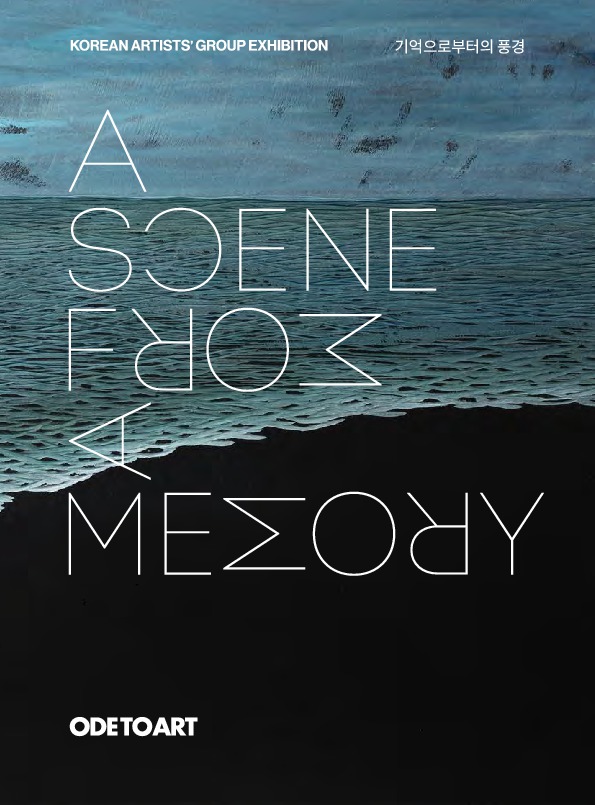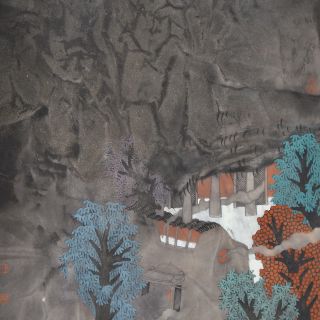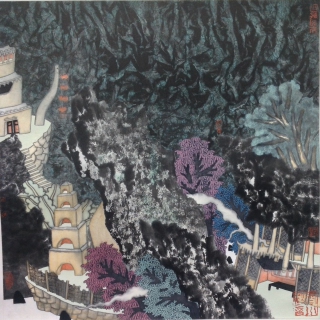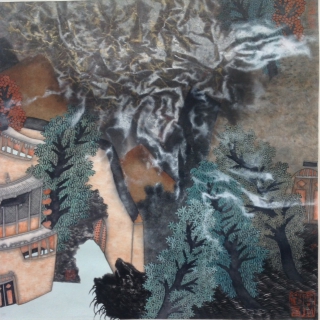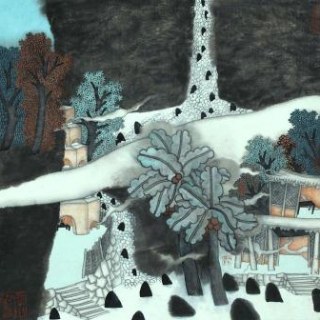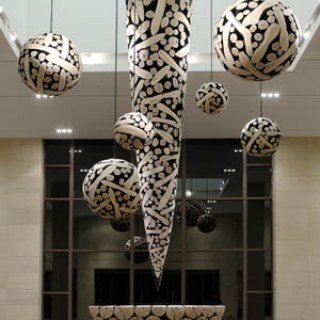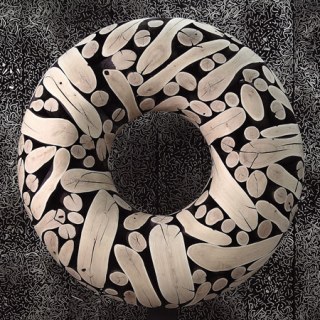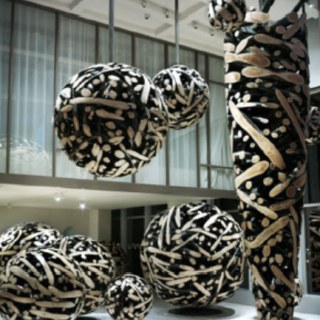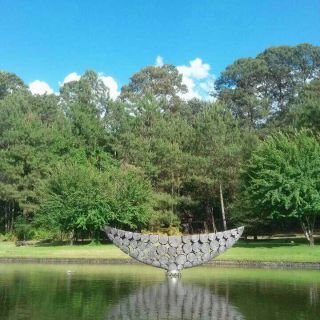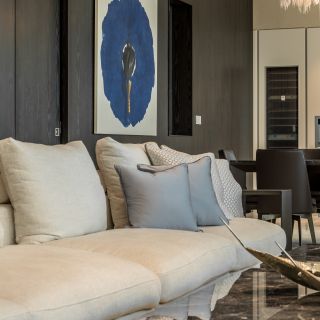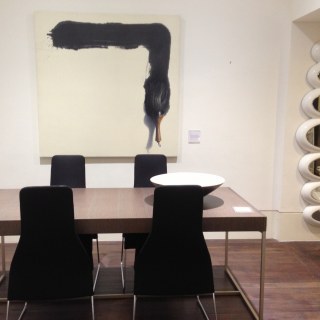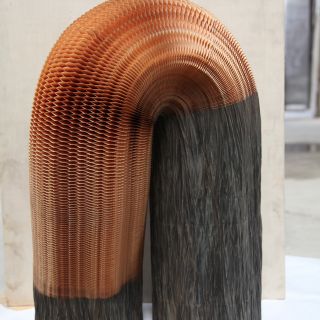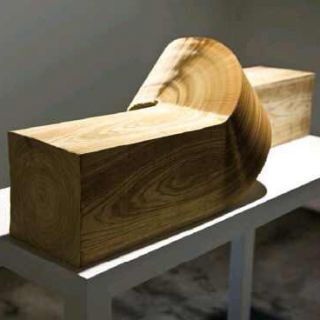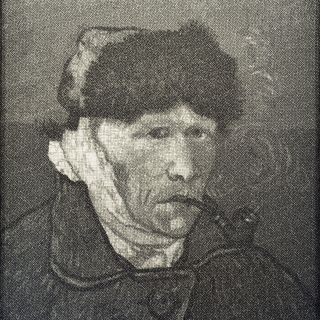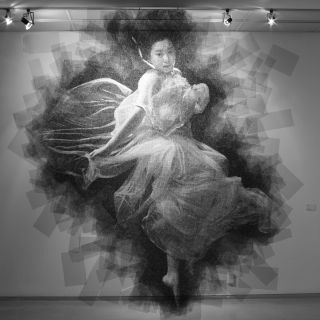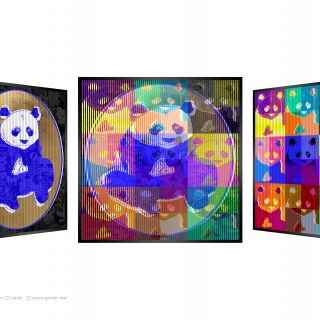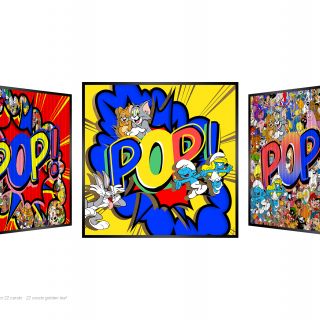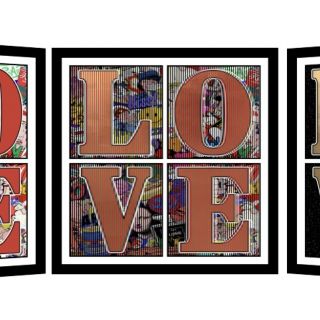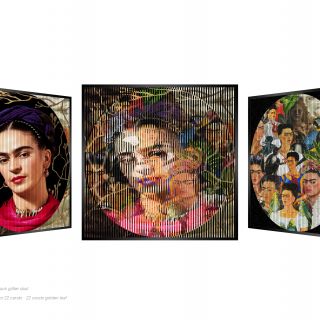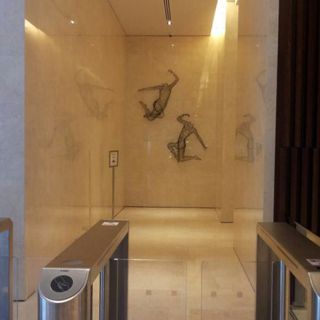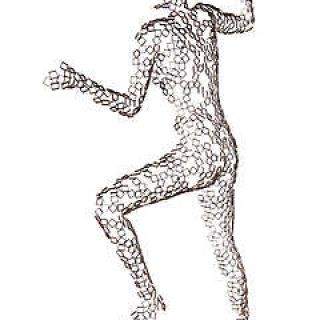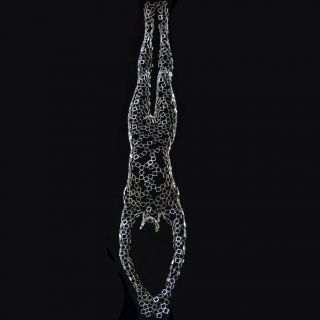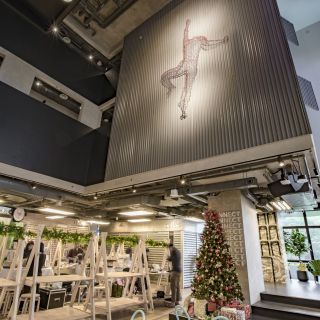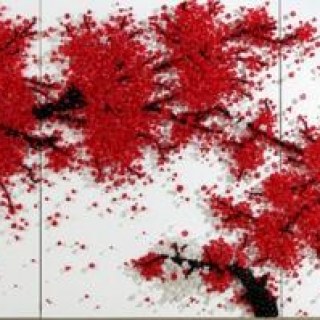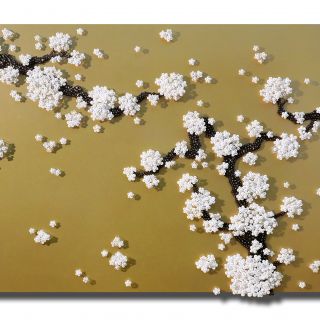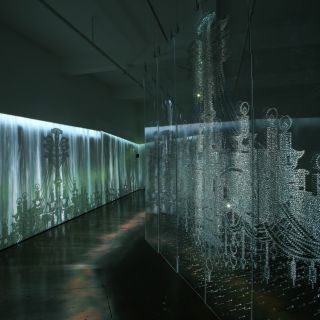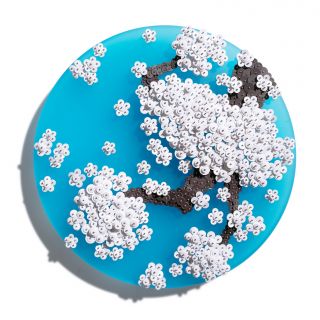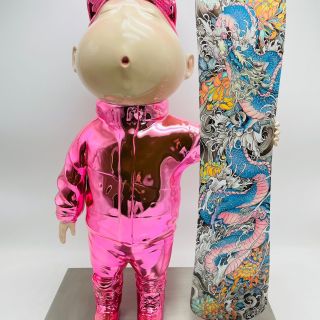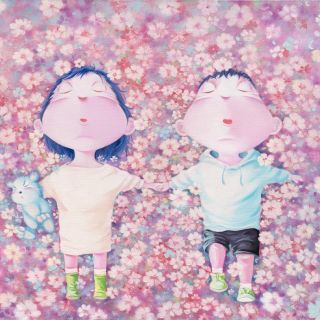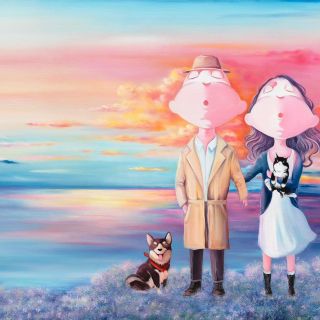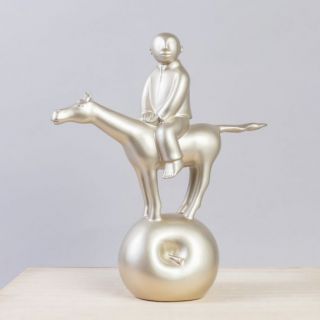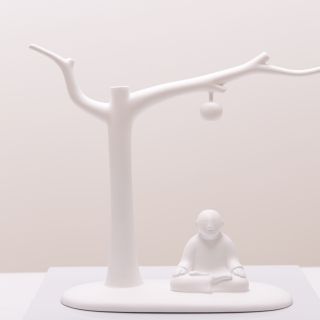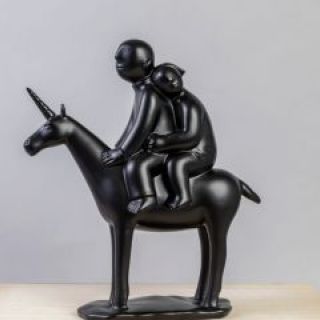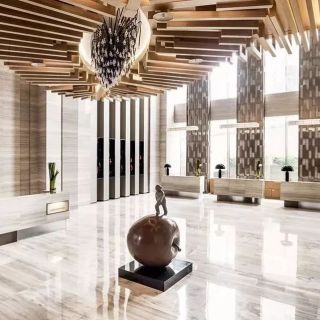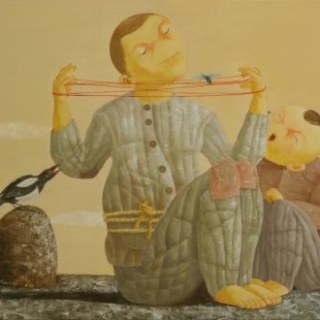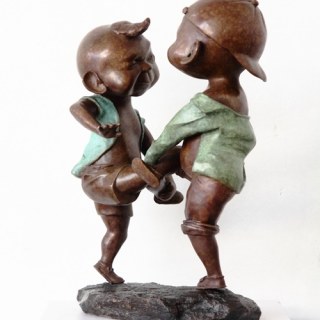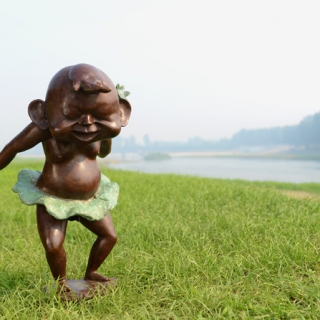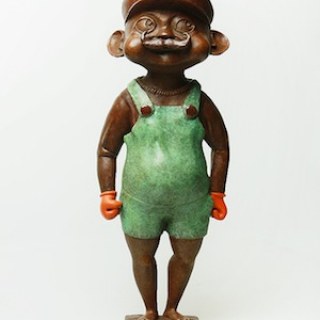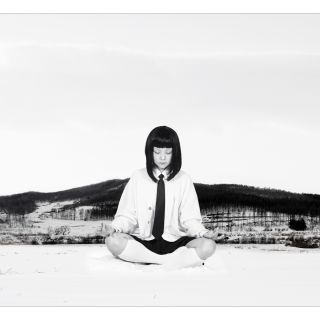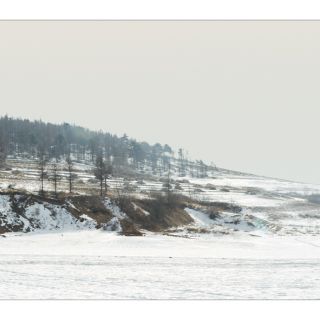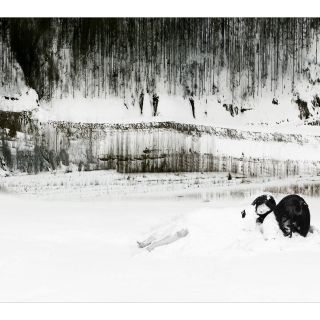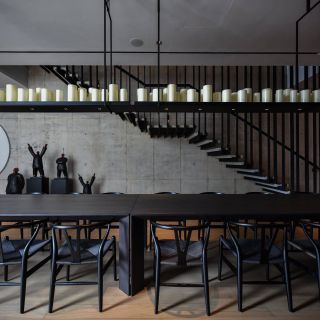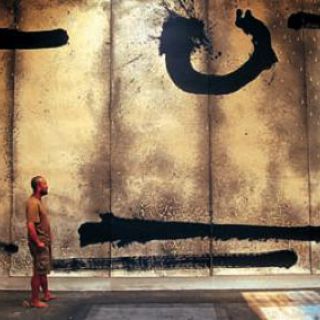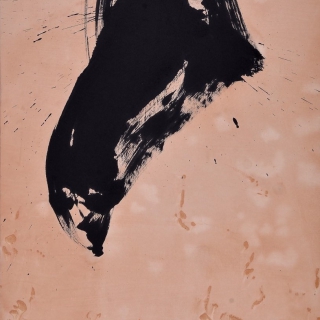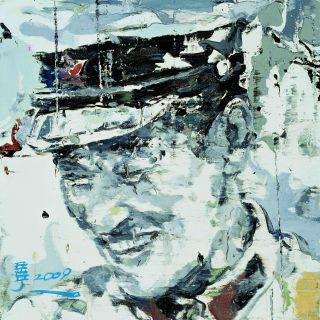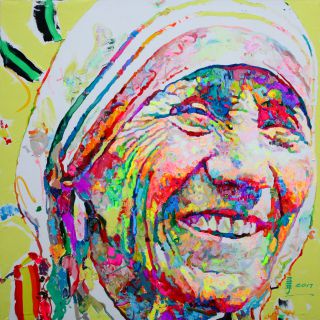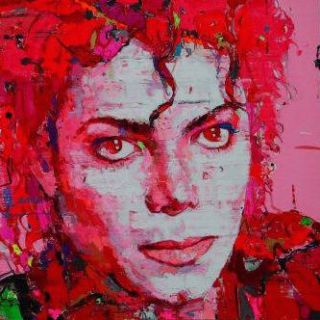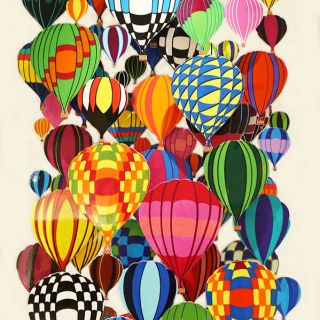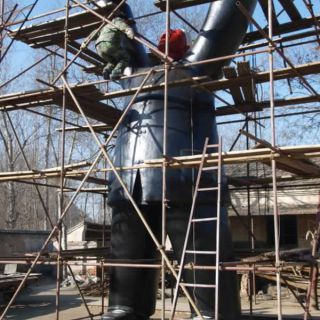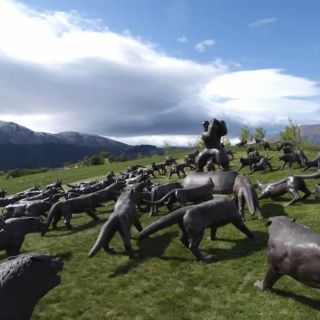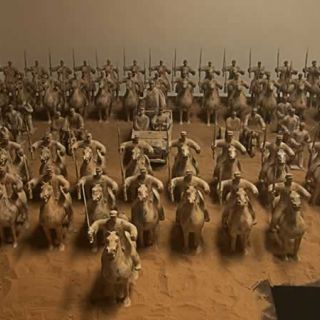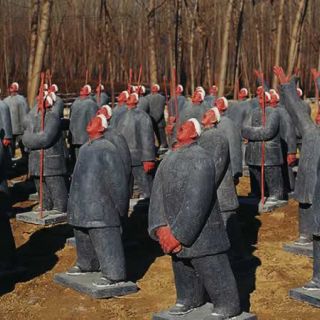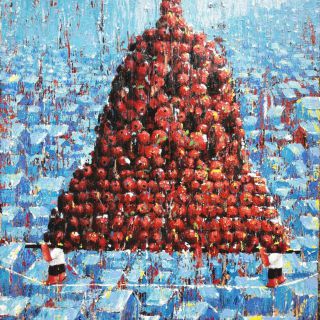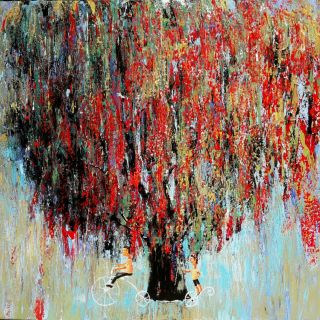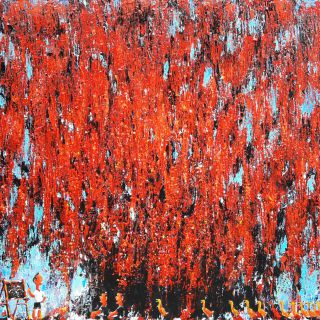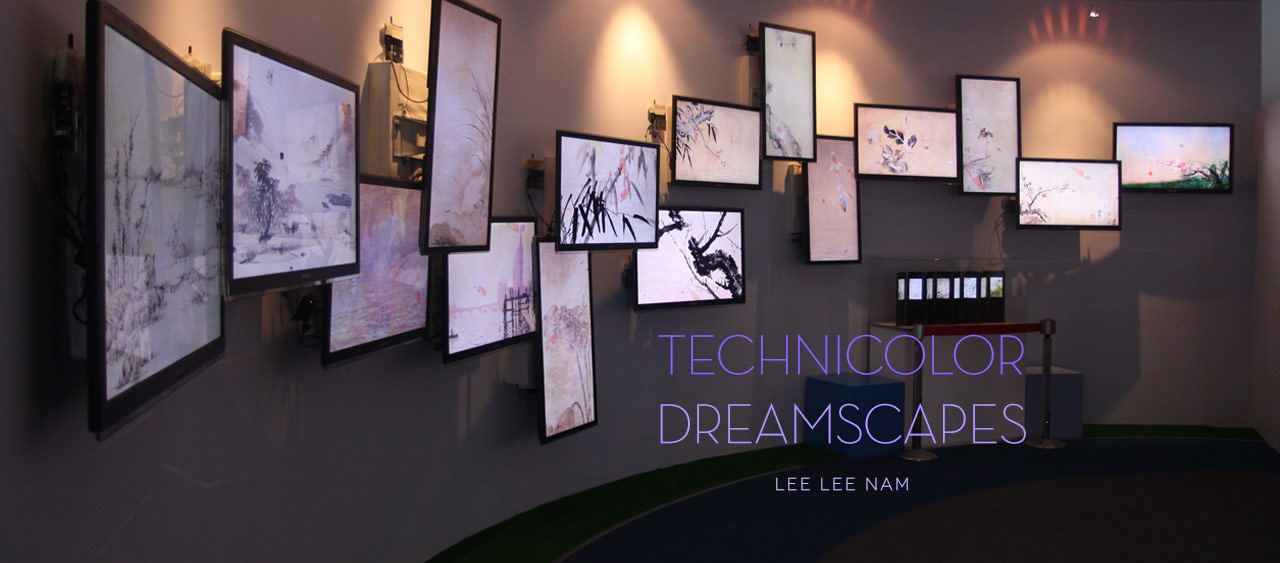
South Korean artist, Lee Lee Nam creates innovative
and dynamic aesthetic masterpieces by combining the use of technology with classic
representations, using monitors to replace canvases and translating his work into
"pure, moving image art". Born in 1969 at Damyang, Lee graduated with
a Ph.D in 2007 from Yongsei University, Seoul, Korea. His creations of
post-modern video artwork are as fictitious as dreams overlapping reality and
one's illusions, encompassing both the traditional and modern image. Lee's artistic
displays are found in New York, Beijing, Germany, Washington, and he has held
over 200 exhibitions worldwide.
Videos 
Videos
Biography 
Biography
South Korean artist, Lee Lee Nam creates innovative and dynamic aesthetic masterpieces by combining the use of technology with classic representations, using monitors to replace canvases and translating his work into "pure, moving image art". Born in 1969 at Damyang, Lee graduated with a Ph.D in 2007 from Yongsei University, Seoul, Korea. His creations of post-modern video artwork are as fictitious as dreams overlapping reality and one's illusions, encompassing both the traditional and modern image. Lee's artistic displays are found in New York, Beijing, Germany, Washington, and he has held over 200 exhibitions worldwide.
In digital eight-fold screens using LED monitors and traditional Asian folding screens, Lee transforms the static iconography of swans, butterflies and birds into moving images flowing from one screen to another. Stories passing through time and space are presented by delicate changes. By videos, Lee Lee Nam narrates a seemingly distant yet familiar, fantastical yet logical modern legend. Without any words, we can hear the new world symphony that the artist is looking for. The sound is present in the elegant flight of butterflies in a painting of flowers and birds, the oriole hopping between flowers and shrubs after rain. The viewer is thus allowed to imagine infinite possibilities which extend beyond the monitors endlessly. His own creation of water-ink paintings enhances masterpieces with subtle additions like the reflection of sunlight and the glow of sunsets, changes of four seasons, floating clouds and combat airplanes in the skies, warships and submarines in the ocean, and flourishing, prosperous earth which extends along the mountain valley and allows the subjects in each scene to shift and crossover across space and time, marvelling viewers.
These digitalised paintings are as alluringly beautiful as they are surprisingly familiar: as if the world's most famous paintings have come alive to correspond and compare, and by encompassing both the traditional and modern – in style and medium – Lee Lee Nam’s works can be called a truly post-modern narrative.Lee Lee Nam believes that video can express the human imagination more thoroughly than other media and is able to convey atmosphere and surprise more readily than traditional art forms. According to the artist, he hopes his work is a way for him to give something back to the people, to create a moment of quiet and calm in a busy modern world. However, there seems to be more in Lee Lee Nam's creations than beauty alone: references to today's consumerism and label-orientated modern societies suggest a more complex and critical narrative.
Public Collections
Office of the President, Republic of Korea
Geum-nam Road, Gwangju, Korea
Gwang-yang Art Center Wolchul Moutain Sculpture Park, Young-am, Korea
Dam-yang University, Dam-yang, Korea
Korea National Open University, Seoul, Korea
Yonsei University, Seoul, Korea
Chosun University, Gwangju, Korea
The MAY 18 Memorial Foudation KBS (Korea Broadcasting System)
Gwangju Museum of Art, Gwangju, Korea
Gyeonggido Museum of Art, Gyeonggido, Korea
Gwangju City Hall, Gwangju, Korea
The Embassy of Republic of Korea in Germany
The Embassy of Republic of Korea in U.S.A.
Haenam Dinosour Museum, Haenam County, Korea
SK Head office, Seoul, Korea
In digital eight-fold screens using LED monitors and traditional Asian folding screens, Lee transforms the static iconography of swans, butterflies and birds into moving images flowing from one screen to another. Stories passing through time and space are presented by delicate changes. By videos, Lee Lee Nam narrates a seemingly distant yet familiar, fantastical yet logical modern legend. Without any words, we can hear the new world symphony that the artist is looking for. The sound is present in the elegant flight of butterflies in a painting of flowers and birds, the oriole hopping between flowers and shrubs after rain. The viewer is thus allowed to imagine infinite possibilities which extend beyond the monitors endlessly. His own creation of water-ink paintings enhances masterpieces with subtle additions like the reflection of sunlight and the glow of sunsets, changes of four seasons, floating clouds and combat airplanes in the skies, warships and submarines in the ocean, and flourishing, prosperous earth which extends along the mountain valley and allows the subjects in each scene to shift and crossover across space and time, marvelling viewers.
These digitalised paintings are as alluringly beautiful as they are surprisingly familiar: as if the world's most famous paintings have come alive to correspond and compare, and by encompassing both the traditional and modern – in style and medium – Lee Lee Nam’s works can be called a truly post-modern narrative.Lee Lee Nam believes that video can express the human imagination more thoroughly than other media and is able to convey atmosphere and surprise more readily than traditional art forms. According to the artist, he hopes his work is a way for him to give something back to the people, to create a moment of quiet and calm in a busy modern world. However, there seems to be more in Lee Lee Nam's creations than beauty alone: references to today's consumerism and label-orientated modern societies suggest a more complex and critical narrative.
Public Collections
Office of the President, Republic of Korea
Geum-nam Road, Gwangju, Korea
Gwang-yang Art Center Wolchul Moutain Sculpture Park, Young-am, Korea
Dam-yang University, Dam-yang, Korea
Korea National Open University, Seoul, Korea
Yonsei University, Seoul, Korea
Chosun University, Gwangju, Korea
The MAY 18 Memorial Foudation KBS (Korea Broadcasting System)
Gwangju Museum of Art, Gwangju, Korea
Gyeonggido Museum of Art, Gyeonggido, Korea
Gwangju City Hall, Gwangju, Korea
The Embassy of Republic of Korea in Germany
The Embassy of Republic of Korea in U.S.A.
Haenam Dinosour Museum, Haenam County, Korea
SK Head office, Seoul, Korea
Exhibitions 
Exhibitions
2007
Shinsegae Gallery, Gwangju
2006
Gwangju Museum of Art, Gwangju
2005
Gwangju Media and Culture Center, Gwangju
2004
Gwangju Media Art Center, Gwangju
2003
Seoul Arts Center Hangaram Museum, Seoul
2002
Gwangju Media Art Center, Gwangju
2001
Namdo Culture and Art Center, Gwangju
2000
Namdo Culture and Art Center, Gwangju
Shinsegae Gallery, Gwangju
2006
Gwangju Museum of Art, Gwangju
2005
Gwangju Media and Culture Center, Gwangju
2004
Gwangju Media Art Center, Gwangju
2003
Seoul Arts Center Hangaram Museum, Seoul
2002
Gwangju Media Art Center, Gwangju
2001
Namdo Culture and Art Center, Gwangju
2000
Namdo Culture and Art Center, Gwangju
Critique 
Critique
Revival of a famous picture in cyberspace
Postmodernism's originality, in addition to its unique creative base, incorporates recent styles, techniques and contemporary methods of expression - not the least of which is the use of the technological advancements of cyberspace. An easily identifiable aspect of postmodernism is the reworking of famous classical artworks, and the borrowing of partial segments of these images which reworks classical art to be more aligned with modern sensibilities.
This is the case with Lee Lee Nam's latest work where he introduces new meaning, modification and movement to famous classical art. Rather than parody traditional works or assume a critical attitude towards the cultural reality of the day, he assimilates his views in an affirmative manner to create a new or different story. The kernel of his revised vision relies on the power of technology and movement.
Lee vests new and vital power into famous classical art by administering technological insertions, and by substituting realistic movement for potential movement of an image for viewing on a screen. His adaptations span past centuries to recent decades. He doesn't pursue far-fetched or exaggerated changes but rather subtly conveys the impression his alterations are more an emphasis or extension of the original artist's intent.
Take, for example, Jan Vermeer van Delt's "Girl With A Pearl Earring" where he has added a single teardrop to the maiden's eye. That single teardrop empowers the original with a lyrical depth of sorrow felt by Vermeer van Delt and his servant in the throes of their hopeless love. The viewer directly experiences a subtle hyper-space-time transition that arouses heartfelt sympathy for the impossibility of a couple's love for each other. Lee's cyberspace embellishments can be further seen with a fly following the butterfly in Shinsaimdang's "Chochungdo", snow in Kim Hong-do's "Mukjukdo" and a swimmer becoming a fish in Monet's pond - all of which serve to heighten the impact of the artists' original images and introduce a new way of viewing the works.
Lee's creative approach through the hyper-space-time continuum can be likened to the medical act of a doctor arousing an unconscious patient from a physical surgical operation. The vitality of his art not only gives life to the spirit of the original classical images but also imbibes them with new meaning and contemporary commentary.
Hee-rang Kim
Curator, Gwangju Museum of Art
Postmodernism's originality, in addition to its unique creative base, incorporates recent styles, techniques and contemporary methods of expression - not the least of which is the use of the technological advancements of cyberspace. An easily identifiable aspect of postmodernism is the reworking of famous classical artworks, and the borrowing of partial segments of these images which reworks classical art to be more aligned with modern sensibilities.
This is the case with Lee Lee Nam's latest work where he introduces new meaning, modification and movement to famous classical art. Rather than parody traditional works or assume a critical attitude towards the cultural reality of the day, he assimilates his views in an affirmative manner to create a new or different story. The kernel of his revised vision relies on the power of technology and movement.
Lee vests new and vital power into famous classical art by administering technological insertions, and by substituting realistic movement for potential movement of an image for viewing on a screen. His adaptations span past centuries to recent decades. He doesn't pursue far-fetched or exaggerated changes but rather subtly conveys the impression his alterations are more an emphasis or extension of the original artist's intent.
Take, for example, Jan Vermeer van Delt's "Girl With A Pearl Earring" where he has added a single teardrop to the maiden's eye. That single teardrop empowers the original with a lyrical depth of sorrow felt by Vermeer van Delt and his servant in the throes of their hopeless love. The viewer directly experiences a subtle hyper-space-time transition that arouses heartfelt sympathy for the impossibility of a couple's love for each other. Lee's cyberspace embellishments can be further seen with a fly following the butterfly in Shinsaimdang's "Chochungdo", snow in Kim Hong-do's "Mukjukdo" and a swimmer becoming a fish in Monet's pond - all of which serve to heighten the impact of the artists' original images and introduce a new way of viewing the works.
Lee's creative approach through the hyper-space-time continuum can be likened to the medical act of a doctor arousing an unconscious patient from a physical surgical operation. The vitality of his art not only gives life to the spirit of the original classical images but also imbibes them with new meaning and contemporary commentary.
Hee-rang Kim
Curator, Gwangju Museum of Art

Stay connected.
Sign up to our newsletter for updates on new arrivals and exhibitions



